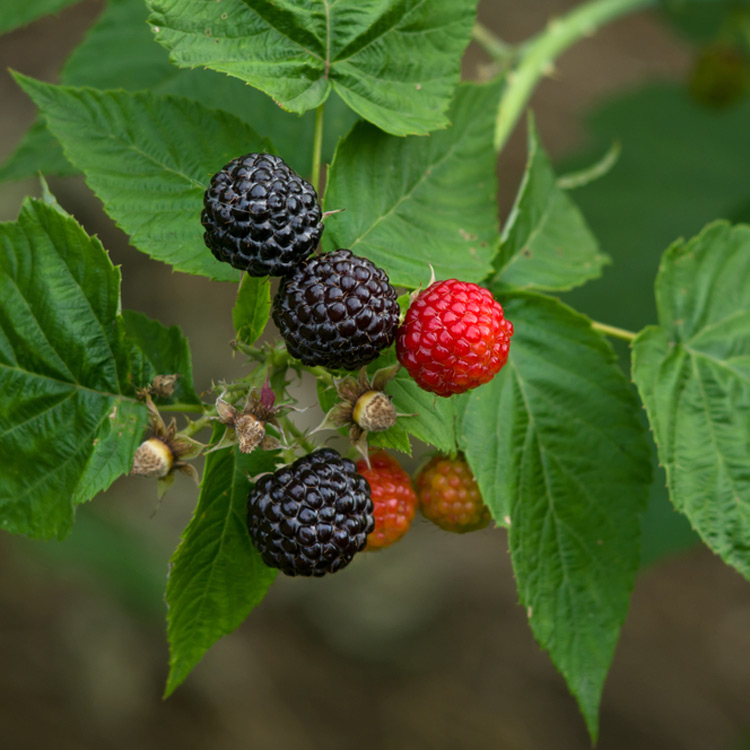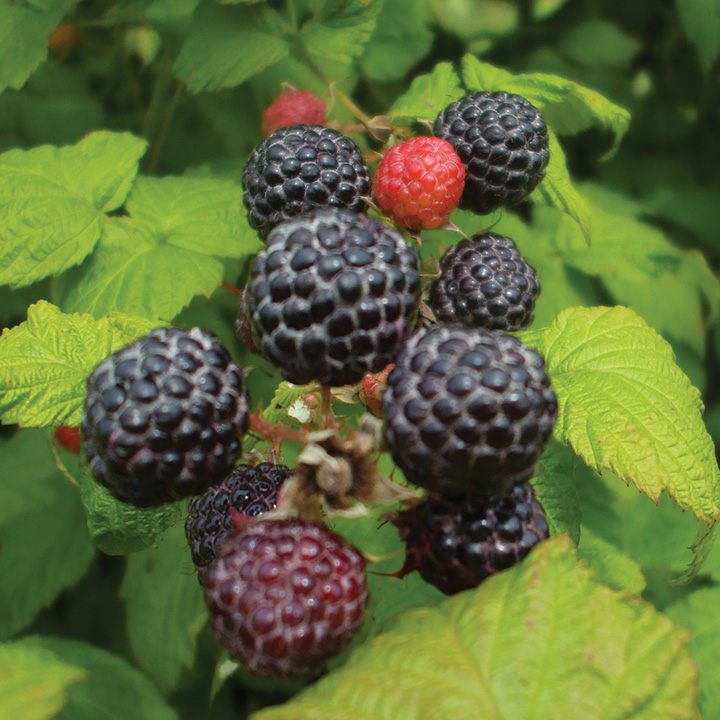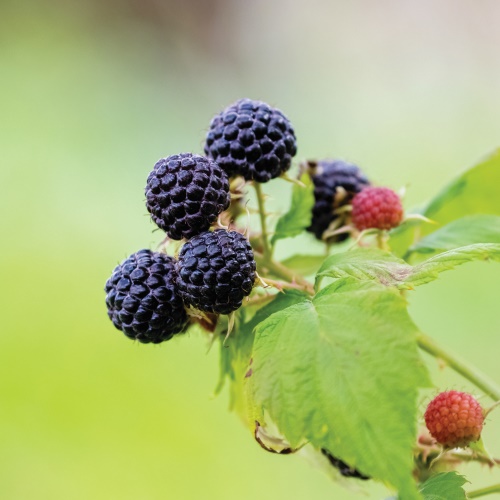Raspberry Black : PEQUOT LAKES 9cm (3¼") pot (Summer Bearing)
$10.95
Developed by Jim Fruth of Pequot Lakes, Minnesota, it ranks right up there with the very hardiest raspberries. Large, flavourful, juicy berries ripen over a three week period in July.
SELF-FERTILE | ZONE 3 | HARVEST: LATE JULY.
Growing Tips
Before leaving the raspberries behind, let's briefly focus on their leaves. They are such a powerful tonic, you should grow some canes for this reason alone. Tea made with raspberry leaves (fresh or dried) is a potent elixir for all sorts of ailments. Do a bit of research or ask any qualified herbalist.
Tipping or tip pruning is highly recommended for black and purple raspberry canes. As the primocanes (first year canes) reach 90-120 cm (3-4'), pinch or cut 8-15 cm (3-6”) off the tips to force branches to develop. Tipping will delay, but prolong, the harvest, increase yield and reduce arching of the canes and tip rooting. Pruning later in the season decreases the amount of time the plant will have to develop the branches. Not pruning the primocanes will allow earlier ripening than the tip-pruning option, however the
canes will become tall and arching, and will develop fewer berries.
Raspberry canes MUST be kept moist until they are in the ground. In fact, we believe that the main reason that canes fail to grow is from the root hairs becoming dry at some point in the planting process.
We suggest using Soil Moist root dip (see page 81). Soak the roots for 1-2 hours just before planting. From our own experience it is highly effective. It is also recommended for other plants – blackberries, strawberries, etc.

2 reviews for Raspberry Black : PEQUOT LAKES 9cm (3¼") pot (Summer Bearing)
Only logged in customers who have purchased this product may leave a review.


John Forest (verified owner) –
Mark Geltink (verified owner) –